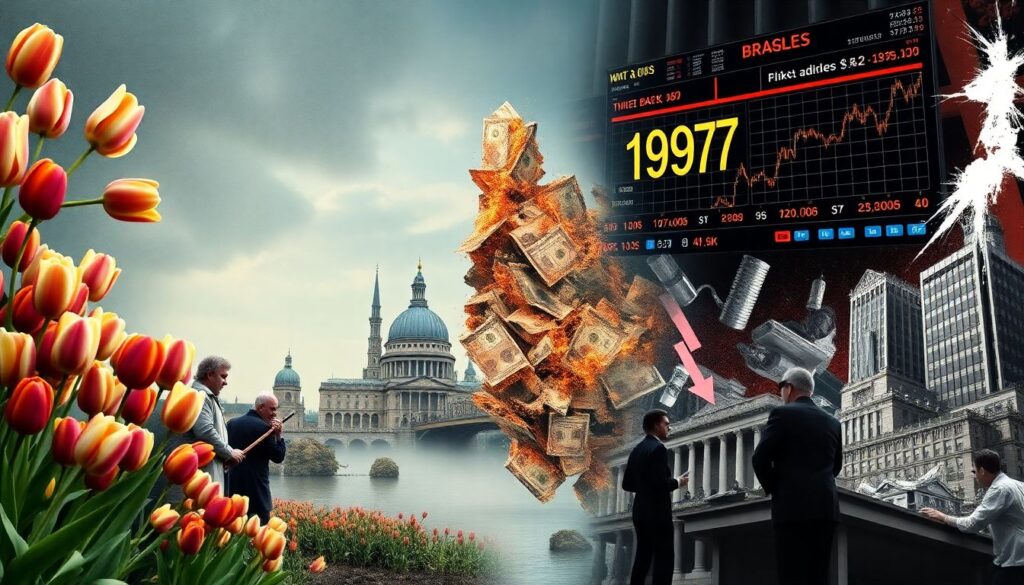Historical Context

Market volatility has been a defining feature of financial systems ever since organized exchanges came into existence. From the Tulip Mania in 17th-century Netherlands to the 1987 Black Monday crash and the 2008 financial crisis, markets have consistently demonstrated sensitivity to both expected and unexpected events. But how do markets actually price in these shocks? The answer lies in a combination of behavioral responses, algorithmic adjustments, and risk re-assessments. For instance, during the 2008 crisis, volatility spiked dramatically as investors fled risky assets, pricing in the uncertainty through instruments like the VIX (Volatility Index). Over time, we’ve seen that volatility reactions are not just knee-jerk responses — they reflect deeper structural and psychological undercurrents.
Core Principles Behind Volatility Reactions
At its core, volatility is a measure of uncertainty. When markets are hit by a shock — whether geopolitical, economic, or technological — the pricing of assets adjusts to reflect the new risk landscape. This adjustment isn’t always rational. Fear and speculation often ramp up volatility far beyond what fundamentals would suggest. The market uses forward-looking models, such as implied volatility in options pricing, to anticipate future movements. This is why volatility often rises even before bad news breaks; the mere expectation of disruption is enough to change pricing behavior.
Three key dynamics drive volatility reactions:
– Information asymmetry: When some market participants have more or better information, prices adjust unevenly, increasing volatility.
– Liquidity crunches: In times of stress, fewer buyers and sellers are willing to transact, leading to sharp price swings.
– Feedback loops: Algorithmic trading can amplify small shocks into larger price moves as stop-loss orders and momentum strategies kick in.
Real-World Examples and Market Behavior
Let’s take the COVID-19 pandemic as a case in point. In early 2020, the market saw one of the fastest volatility spikes in history. The VIX soared from under 15 to over 80 in a matter of weeks. This wasn’t just due to the virus itself, but also the uncertainty around policy responses, supply chain disruptions, and consumer behavior shifts. Traders priced in multiple layers of risk — economic lockdowns, earnings collapses, and massive government interventions.
Another example is the 2022 energy shock following the Russia-Ukraine conflict. Commodity markets, especially oil and natural gas, experienced extreme volatility as supply chains were disrupted. Interestingly, while some sectors (like defense and energy) saw positive shocks, others (like travel and manufacturing) were decimated. This divergence shows how volatility reactions are not uniform — different sectors can price shocks in opposite directions based on their exposure.
Common Misconceptions About Market Volatility

One of the most persistent myths is that high volatility always means a market crash is imminent. In reality, volatility simply signals uncertainty — not necessarily negative outcomes. Some of the biggest rallies in market history have occurred during high-volatility periods. Another misconception is that volatility is purely reactive. In truth, markets often “price in” shocks before they happen, especially when there are strong rumors or leading indicators.
Other common misunderstandings include:
– Volatility equals risk: While related, volatility is just one dimension of risk. A stable asset can still carry hidden systemic risk.
– Volatility can be predicted easily: Despite the abundance of models, predicting volatility with precision remains notoriously difficult.
– Retail investors can’t benefit from volatility: Actually, tools like options and inverse ETFs allow even small investors to hedge or speculate during turbulent times.
Unconventional Approaches to Navigating Volatility
Traditional methods of handling volatility — diversification, hedging, safe-haven assets — are well-known. But in a world of algorithmic trading and real-time data, more inventive strategies are emerging. For example, some funds use sentiment analysis of social media and news to anticipate volatility spikes before they show up in traditional indicators. Others employ machine learning models that adapt dynamically to new kinds of shocks, including climate events or cyberattacks.
Here are a few forward-thinking ideas:
– Volatility harvesting: This strategy involves systematically selling volatility (via options or derivatives) during calm periods and buying it during spikes, effectively profiting from mean reversion.
– Cross-asset volatility arbitrage: By comparing volatility across asset classes (e.g., equities vs. commodities), traders can spot mispriced risk and capitalize on convergence.
– Event-triggered rebalancing: Instead of periodic portfolio reviews, some investors now use volatility thresholds as signals to reallocate assets, making their strategy more responsive to market shocks.
As markets evolve, understanding how volatility reacts to shocks — and how to interpret those reactions — becomes more critical than ever. It’s not just about surviving the storm, but learning how to sail through it with better tools and sharper insights.

